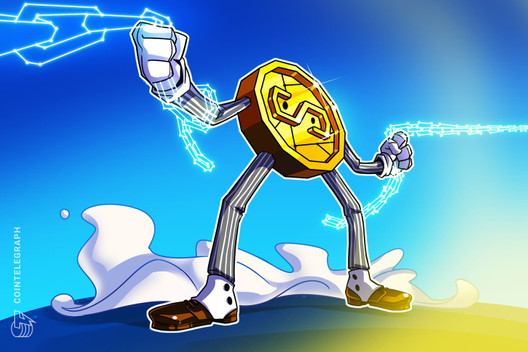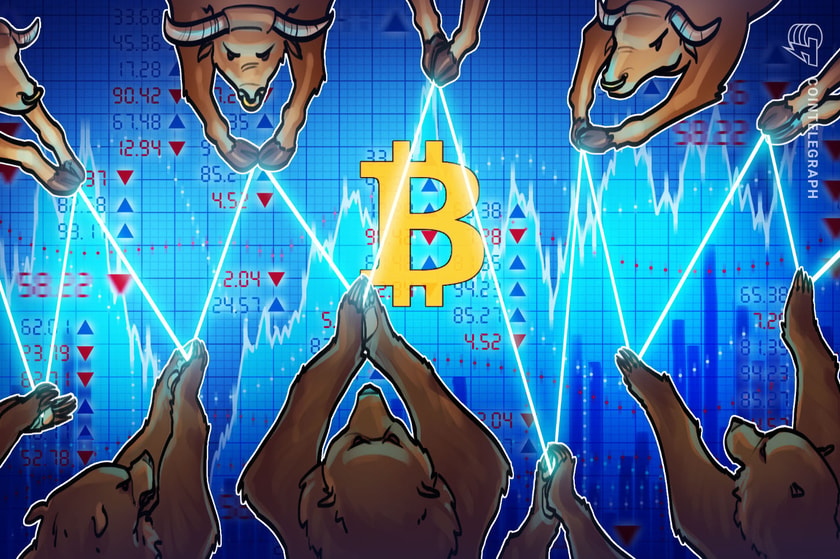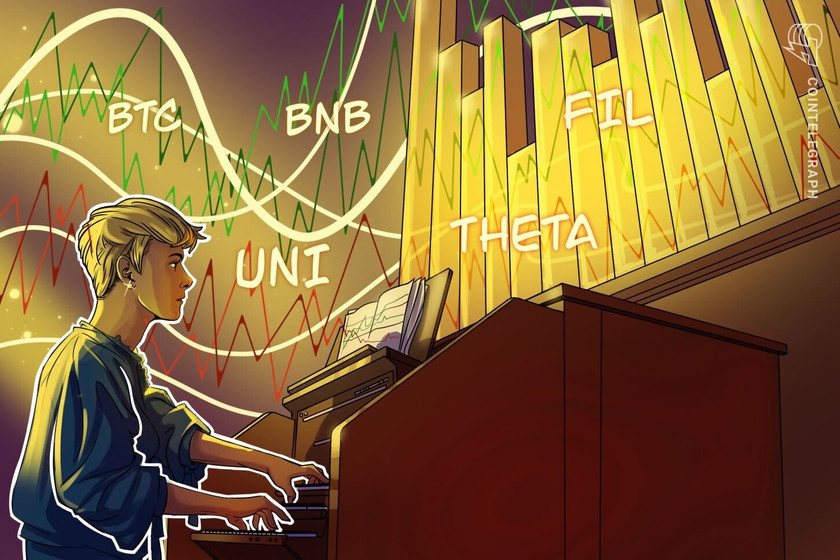Book review: ‘Boom and Bust — A Global History of Financial Bubbles’
Bitcoin has long had to deal with accusations of bubbledom being levelled at it, although it can hardly protest. During the last decade its price has ballooned on multiple occasions, only to come tumbling back down, albeit generally to a slightly higher level than pre-pump.
Our old friend, Nouriel Roubini, considers cryptocurrency the “mother and father of all bubbles,” which would be quite an accomplishment for such a relative whippersnapper.
Financial bubbles have been around for over 300 years, as the book Boom and Bust by William Quinn and David John Turner explains. Through examining the development of major bubbles through history, it suggests the likely causes and how to potentially predict (and avoid) future bubbles.
So what constitutes a bubble anyway?
Some dislike the term “bubble,” believing that it is primarily used to describe episodes for which there is no better explanation, or that there is a collective madness or irrationality involved.
Of course, a book analysing the reasons behind bubbles would not have to be very long if “They crazy!” was a suitable conclusion. Instead the authors choose the simple definition of a bubble as a sharp increase in the price of an asset followed by a steep decrease.
Some argue that there must also be a disconnection from the asset’s fundamental value, although this definition can make identifying “true” bubbles more difficult and is not used in the book.
Burn baby burn
The book draws an analogy between financial bubbles and fire. Where fire needs oxygen, fuel and heat to burn, so a financial bubble requires the three elements in “The Bubble Triangle”. These being marketability, money/credit and speculation.
Marketability considers the ease with which something can be bought and sold. This can depend on factors such as legality, divisibility, portability and the number of potential buyers.
Money and credit is analogous to the fuel that the fire/bubble consumes. Easy credit and low yields on safe assets can drive investors to more risky and/or overpriced assets.
Finally, speculation is the purchase (or sale) of an asset in the hope of selling (or repurchasing) the asset at a later date in order to make a profit.
When these three elements are present, a spark can easily ignite a bubble. This spark, suggests the book, generally comes from either technological innovation or government policy.
Boom and bust
The rest of the book then looks at individual bubbles and applies this model to them. From the South Seas bubble of 1720, through railway mania, the Wall Street crash and the dot-com bubble, to 2008’s property bubble and recent government-induced bubbles in China.
All are examined to identify the presence of marketability, credit and speculation, and the technical or political spark which caused them to initially boom.
But, and probably quite importantly to Cointelegraph readers, no mention of cryptocurrency thus far.
To be fair, the final chapter, called Predicting Bubbles, says that when starting the book, the authors had identified a financial environment which suggested that another bubble was likely. It then describes the spark of blockchain technology which ignited the crypto bubble (and it was definitely a bubble according to the book’s definition), spurring increased speculation, and the eventual burst.
However it quickly moves on to the meat of the chapter, which is, err… predicting bubbles.
Recommend to a friend?
As an exploration of the bubble phenomenon this is a great book. It is published by Cambridge University Press, and this is reflected in the research, writing, editing and overall production. Information is clearly presented in appropriate language, with a strong narrative flow throughout.
It does not patronize the reader yet is readily accessible, although some prior awareness of financial terminology would be beneficial.
As a general reference for cryptocurrency enthusiasts it perhaps doesn’t hit the spot, except for those who are particularly interested in the science behind bubbles… and I’m sure there are more than a few of those.
Of course, it doesn’t ever purport to, so this is not something we should really criticize it for.
So rather than criticize, Cointelegraph asked William Quinn, one of the book’s authors, for his perspective on cryptocurrency and bubbles in 2020.
The Bitcoin and cryptocurrency bubble in 2017 does not make the industry immune to further bubbles, according to Quinn:
“I think it’s quite commonly believed that the memory of a bubble inoculates investors against the next one, but that doesn’t seem to be the case recently. Bubbles are just happening more and more frequently.”
One surprising element that the book highlights is the positive outcome of bubbles, in that they can bring technological and social change.
Although Quinn concedes that blockchain technology fits within this framework of this, he personally doesn’t see a valid benefit for the technology, saying, “it’s been around for a while now, and I’ve seen very few convincing use cases. It’s become a bit of a cliché, but to me it still looks like a solution in search of a problem.”
When asked whether the financial environment which pre-empted 2017’s crypto bubble was still around, Quinn replied “Definitely!”
“All of [the three elements of the bubble triangle] have been in place now for some time, and are going to be in place for the foreseeable future. To come back to my first point – bubbles are just happening more and more frequently.”
So Bitcoin and other cryptocurrencies could easily bubble again, or even be bubbling up at this very moment. Which might seem like great news, but of course steady sustainable growth would be a much better outcome, and with less chance that it will all go pop.
The views, thoughts and opinions expressed here are the author’s alone and do not necessarily reflect or represent the views and opinions of Cointelegraph.









